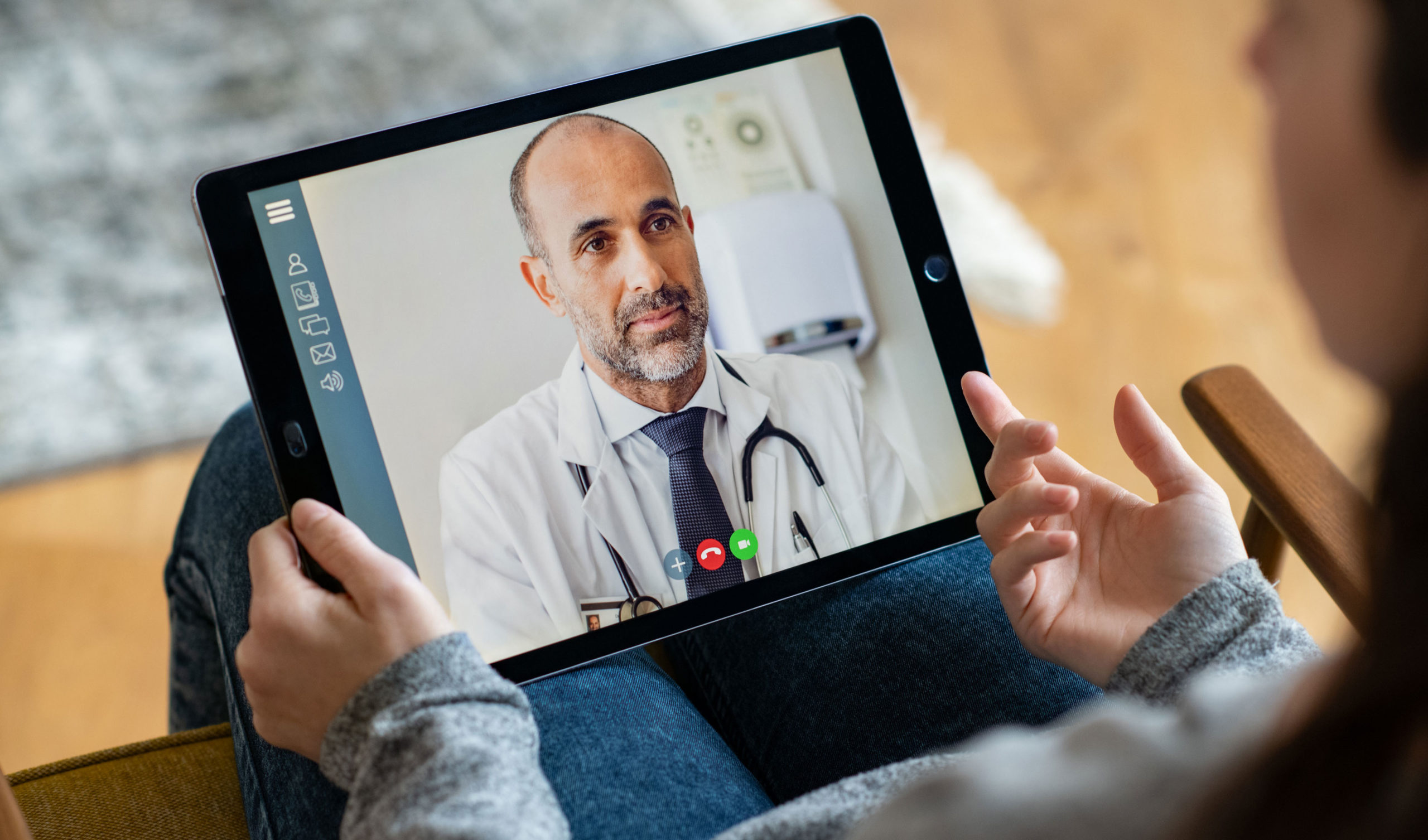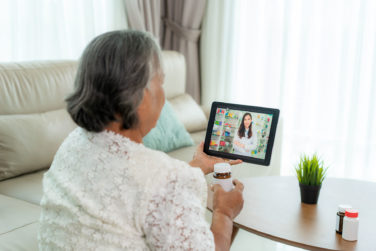COVID-19 forced us to reimagine healthcare and ways of doing business. Telehealth quickly emerged as a key tool to provide routine and emergency care in real time as well as keep both patients and providers safe.
Telehealth was on a growth trajectory before the COVID-19 crisis. In 2016, for example, Kaiser Permanente1 used telehealth for more than half (52%) of patient visits. According to one estimate,2 more than 60% of all healthcare institutions and 40% to 50% of all hospitals used some form of telehealth in 2016. That jumped to 85% of hospitals and 45% of outpatient settings in 2019.
Now in the COVID-19 era, practitioners and medical centers across the country have been rolling out telehealth3 services to mitigate the risk of spread of the virus by reviewing patients’ symptoms remotely and replacing in-person, non-COVID-19 visits with telehealth. A recent survey4 of consumers’ perceptions found two-thirds are more willing to use telehealth out of fear of infection from going to the doctor’s office.
To be sure, the boom in telehealth also has been fueled by numerous relaxed regulations by Medicare, various agencies, and other payers on reimbursement, and multi-state licensure and prescribing, among others. No doubt each of those will be revisited after the crisis, but many are expected to remain in effect and will add to telehealth’s staying power. In short, the COVID-19 crisis is likely to be the tipping point toward broad adoption of telehealth by patients, payers, and providers. This creates opportunities for Life Sciences Field Teams.
What is Telehealth?
Everyone seems to be using telehealth, but is it telehealth? Telemedicine? Many people use the terms synonymously, but there is a distinction. Telemedicine is the traditional term referring to using technology for clinical diagnosis and monitoring. Telehealth is broader and encompasses four modalities:
- Virtual visits, which are live visits by video conference and telephone (sometimes called Tele-visits)
- Store-and-forward (asynchronous) video conferencing primarily for primary care consultations with specialists
- Remote patient monitoring
- Mobile health
Most of us will be concentrating our efforts on using virtual visits to help physicians improve the quality and utility of ambulatory patient visits. Primary use cases involve monitoring chronic conditions with the patient’s practice and “on-demand” visits with an online doctor who may or may not have access to the patients records. New population groups are users, including the elderly and those with behavioral health issues. Policymakers are beginning to examine how virtual visits can reach such vulnerable populations as African Americans. They are emerging as disproportionally5 likely to be hospitalized and die from COVID-19 complications.
How Does it Work?
Virtual visits leverage advancements in health information technology and interoperability. These include existing technologies, such as patient portals, and emerging technologies, such as Zoom. Business-to-business vendors provide doctors with virtual visit support to serve the existing patients of the practice. Separately, direct-to-consumer virtual visit services provide after-hours, on-demand physicians who supply the platform and physician primarily for urgent care.
This distinction is important because of differing access to patient information. On-demand telehealth practitioners often lack a full view of the patient’s medical history. It is different for doctors who are connected to the patient. There, virtual visits wrap around information currently stored in the electronic health record (EHR). This provides access to a wealth of patient-specific diagnosis and treatment information, as well as information provided by pharmaceutical representatives that is stored in the machine. This could include educational materials and criteria to help identify patients who are eligible for specific treatment modalities.
Opportunities in Telehealth
Going forward, virtual visits will have a profound impact on how Life Sciences Field Teams interact with physicians and their practices. Opportunities include:
1. Documentation for virtual visits currently sits in the EHR, but pharma companies’ best practices could influence these EHR templates to improve proficiency. These documentation templates are in-practice EHRs to guide HCPs through the visit. The templates are created at a practice level and customized by the type of disease, making it simple to document key information consistently. But frequently, these templates have not been updated as the science behind diseases changes, which is where pharma companies can offer value by prompting review of existing templates and recommending updates.
2. Any existing information you have can be repurposed. Leave-behinds, for example, can be encouraged to be stored in the EHR. They then can be called up on shared screens during virtual visits or sent electronically to the patient post visit.
3. Digital-friendly materials are a must. This will be an opportunity for new types of health professionals (such as physician assistants) who will be conducting virtual visits. Product information should be tailored to the new patient populations using virtual visits.
4. Virtual visit platforms are coming on stream at a dizzying pace. Teams should work with vendors on how independent providers are using treatment protocols, guidelines, and education material as part of virtual visits. This can alter how products are perceived and prescribed and how patients understand a new medication.
It’s clear that virtual visits will now be part of our new normal. Life Sciences Field Teams with limited awareness and knowledge of the technology’s impact on healthcare provider actions will be increasingly at a competitive disadvantage.
References:
1. https://www.advisory.com/daily-briefing/2016/10/13/kaiser-telehealth.
2. https://aspe.hhs.gov/system/files/pdf/206751/TelemedicineE-HealthReport.pdf.
4. https://www.healthcareitnews.com/news/survey-americans-perceptions-telehealth-covid-19-era.










